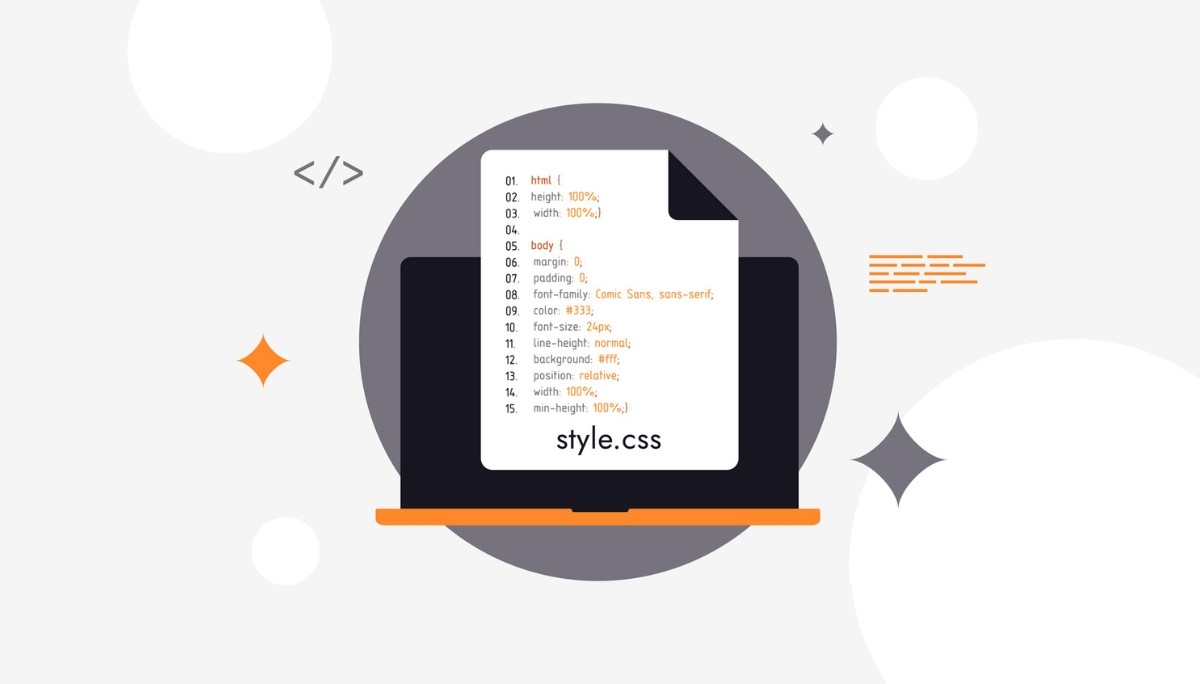What Is OpenCV and How Is It Used in Computer Vision?
By
Samantha Cox
•
Jun 23, 2025
OpenCV is a robust open-source library designed for real-time computer vision tasks like object detection, facial recognition, and augmented reality. It is widely used in industries ranging from security to healthcare, helping to solve complex image processing tasks efficiently. So, what exactly is OpenCV used for? In this article, we’ll explore the many ways it’s reshaping computer vision. And if you’re a recruiter looking to hire engineers who know how to work with cutting-edge tools like OpenCV, Fonzi AI can help you connect with top-tier talent who are already applying these skills to real-world projects.
Key Takeaways
OpenCV serves diverse applications in computer vision, including security surveillance, quality control in manufacturing, retail analytics, and more, while continuously evolving with advanced features.
Real-time object detection is a key application of OpenCV, enabling efficient identification of objects in images and videos, which is critical for industries like autonomous vehicles and robotics.
OpenCV provides powerful tools for image processing, facial recognition, gesture recognition, image segmentation, and augmented reality, facilitating the development of sophisticated computer vision systems across various sectors.
Applications of OpenCV in Computer Vision

OpenCV’s applications in computer vision are as diverse as they are impactful. Its ability to process images in real-time has made it a staple in various industries. One of the most prominent applications is in the realm of security. OpenCV enables the development of sophisticated surveillance systems that can detect and track objects and individuals, enhancing security protocols and reducing the risk of intrusions. In industrial manufacturing, OpenCV is used for inspecting mass-produced products, ensuring quality control, and operational efficiency.
The introduction of deep learning capabilities in OpenCV version 4.0 has further expanded its utility. Incorporating neural network inference allows OpenCV to tackle tasks that were previously challenging or impossible. This includes advanced image classification and object detection, which are critical for applications in healthcare, where accurate diagnostics are paramount in the latest version and may lead to major changes.
Retail analytics is another area where OpenCV shines. By analyzing customer behavior through video feeds, retailers can optimize store layouts and improve the shopping experience.
Moreover, OpenCV is not just limited to large-scale commercial products; it also finds use in smaller, more specialized projects. From academic research to hobbyist projects, the flexibility and power of OpenCV ensure that it remains a go-to tool for anyone working in computer vision. With each new version, OpenCV continues to evolve, integrating more advanced features and improving performance, solidifying its position as a leading computer vision library.
Real-time Object Detection with OpenCV

Real-time object detection is one of the most exciting and practical applications of OpenCV. The ability to identify objects in images and videos as they are being captured opens up a world of possibilities. Designed for real-time use, OpenCV ensures maximum efficiency in processing images and videos. This capability is particularly useful in scenarios where speed and accuracy are critical, such as autonomous vehicles, robotics, and security systems.
Creating a real-time object detection system with OpenCV is surprisingly accessible. Using readily available hardware like webcams, developers can quickly set up a basic detection system by downloading the necessary files, installing the OpenCV-python package, and running specific code. OpenCV supports various object detection techniques, including using pre-trained models that enhance accuracy and utilizing frameworks for better implementation. For instance, the MobileNetSSD model is commonly used with OpenCV for detecting various objects in real-time.
A key technique in OpenCV for object detection is template matching, which involves recognizing objects by comparing image segments to predefined templates to identify objects. OpenCV’s face detection capabilities also rely on key features like Haar feature extraction detectors, which scan image pixels to detect faces at multiple scales.
These methods, combined with the power of modern hardware, allow for the development of robust and efficient real-time integrated object detection systems that can be deployed in a wide range of applications for humans.
Image Processing Algorithms in OpenCV
At the heart of OpenCV lies a suite of powerful image processing algorithms that enable a wide range of applications. These algorithms are designed to manipulate and analyze images to extract meaningful information. One of the fundamental techniques is geometric transformations, which include operations like rotation, translation, and scaling. These transformations are essential for tasks that require image alignment or resizing, such as in medical imaging or satellite imagery analysis.
Color space conversion is another critical image processing technique supported by OpenCV. Converting images from one color space to another allows developers to manipulate and analyze colors more effectively. This is particularly useful in applications that require color-based object detection or tracking.
Smoothing techniques like blurring are available in OpenCV to reduce noise and detail in images, making them easier to analyze.
Edge detection is a vital component of many computer vision applications, and OpenCV provides robust algorithms like the Canny edge detector to identify edges within images. The Hough Transform detects geometric shapes like lines and circles, essential for applications like lane detection in autonomous vehicles.
These image processing algorithms are the backbone of OpenCV, enabling developers to build sophisticated vision algorithms systems that analyze and interpret visual data with high precision.
Facial Recognition Using OpenCV

Facial recognition is one of the most widely recognized applications of OpenCV. This technology is used in a variety of contexts, from unlocking smartphones to providing secure access to facilities. OpenCV’s FaceRecognizer offers a set of popular face recognition algorithms that are both powerful and efficient. Leveraging these algorithms, developers can build systems that automatically recognize faces and match human faces against a database of facial features.
The process of facial recognition involves:
Detecting a face within an image
Extracting unique facial features to create a digital signature
Comparing this signature against a database to determine a match
OpenCV simplifies this process with its robust OpenCV library of functions, making it a highly optimized library accessible for commercial and personal OpenCV projects alike. The various OpenCV versions enhance its functionality.
Whether it’s for enhancing security or creating innovative user experiences, OpenCV’s facial recognition capabilities continue to lead the way in computer vision technology.
Gesture Recognition and Human-Computer Interaction
Gesture recognition is a fascinating application of OpenCV that enables computers to interpret and respond to human gestures. This interaction is made possible by analyzing video feeds to detect and track hand movements. By processing input from webcams or other video sources, OpenCV facilitates gesture recognition, making it accessible for developers and researchers.
OpenCV employs several techniques to achieve accurate gesture recognition. Contour detection and optical flow are among the most commonly used methods. These techniques enable the system to track the movement of hands and other objects in real-time, providing a seamless interaction experience. OpenCV’s machine learning capabilities enhance the accuracy and reliability of gesture recognition systems, making them suitable for a wide range of applications, from gaming to interactive art installations.
Real-time gesture recognition significantly improves user experiences in interactive environments. Enabling intuitive control through gestures, OpenCV opens new possibilities for human-computer interaction. Whether controlling a device with a wave of the hand or creating immersive augmented reality experiences, gesture recognition powered by OpenCV is transforming how we interact with technology.
Image Segmentation Techniques in OpenCV
Image segmentation is a crucial technique in computer vision that involves dividing an image into segments to simplify or enhance its representation. OpenCV offers several powerful methods for image segmentation, with the watershed algorithm being one of the most notable. This marker-based technique treats grayscale images as topographic surfaces, assigning different labels to known foreground, background, and unknown regions to facilitate segmentation.
Before applying the watershed algorithm, morphological operations like opening and closing refine the image. These operations remove noise and separate connected objects, making the segmentation process more accurate. The cv.connectedComponents() function labels connected regions in an image, essential for the watershed algorithm to work effectively.
The distance transform technique in OpenCV, when combined with the watershed algorithm, better segments touching objects within an image. Leveraging these advanced segmentation techniques, developers can create precise and efficient computer vision applications that analyze and interpret complex visual data.

Augmented reality (AR) is an exciting application of OpenCV that aims to augment the physical world with computer-generated information. Overlaying digital content such as 3D models or information onto the real world, AR creates immersive and interactive experiences. OpenCV can detect ArUco markers, which are essential for implementing AR experiences by providing reference points in the physical environment.
Creating AR experiences with OpenCV involves applying a perspective warp to seamlessly integrate digital content with the real world and enhance motion understanding. This project manipulation of images based on detected markers allows for accurate and dynamic overlays at Willow Garage.
Real-time AR with OpenCV enhances user interaction by overlaying content onto live camera feeds, enabling applications like Pokémon Go. Whether it’s for entertainment, education, or industrial applications, OpenCV’s capabilities in AR continue to expand the boundaries of what is achievable.
The use of GPUs for faster processing is a significant advantage in OpenCV, enabling substantial performance improvements. OpenCV supports automatic GPU usage through OpenCL by converting Mat objects into UMat, enabling efficient parallel processing of image data. Automatic utilization of GPUs accelerates various image processing tasks, making real-time applications more feasible.
For more advanced GPU acceleration, OpenCV supports CUDA, although this requires compiling the library from source to enable GPU functions. The performance gains from GPU acceleration in OpenCV can vary depending on the specific operation and image size.
Though not all OpenCV functions have OpenCL implementations, the available options significantly enhance processing speed for many critical tasks. Leveraging GPU acceleration, developers can create highly efficient and responsive computer vision systems with performance-optimized code.
Developing Computer Vision Systems with OpenCV

Developing computer vision systems with OpenCV offers a comprehensive toolset for solving complex vision problems. It offers a standard framework that facilitates the development of scalable and efficient systems. A key feature enhancing the user experience is the open-source computer vision library Viso Suite, which includes a no-code editor and automated model management for efficient pipeline management.
OpenCV is used across various fields and many industries, including:
Manufacturing: performing tasks like equipment inspection and predictive maintenance.
Healthcare
Agriculture
Security: employed for surveillance and intrusion detection, enhancing safety protocols.
Crowd analytics: providing valuable insights, aiding in managing and monitoring public spaces.
Despite its many advantages, developing computer vision systems with OpenCV can present challenges, such as dealing with noise and distortions in image data. However, OpenCV’s
Fonzi: The Ultimate Solution for Hiring AI Engineers
Fonzi is a revolutionary platform designed to connect top AI engineers with leading companies. This curated AI engineering talent marketplace streamlines the hiring process, making it easier for companies to find and hire highly skilled AI professionals. Fonzi conducts monthly hiring events called Match Days, where companies can make salary-backed offers to matched candidates, ensuring a quick and efficient hiring process.
What sets Fonzi apart is its dedication to preserving and elevating the candidate experience, including:
Providing a dedicated recruiter for candidates, offering personalized support throughout the hiring process
Offering high-signal, structured evaluations
Incorporating built-in fraud detection and bias auditing to ensure companies receive the best possible talent
By making hiring fast, consistent, and scalable, Fonzi supports both early-stage startups and large enterprises, accommodating hiring needs from the first AI hire to the 10,000th.
Summary
This guide has taken a closer look at the many ways OpenCV is used in computer vision, from real-time object detection and image processing to advanced applications like facial recognition and augmented reality. With its powerful capabilities, OpenCV empowers developers to build cutting-edge, efficient vision systems that truly push the limits of what’s possible. As the library continues to evolve with new features and better performance, it remains a go-to tool for anyone serious about computer vision. For recruiters and tech leads, Fonzi AI can help you find top-tier engineers who know how to harness tools like OpenCV to drive innovation in real-world applications.
.




